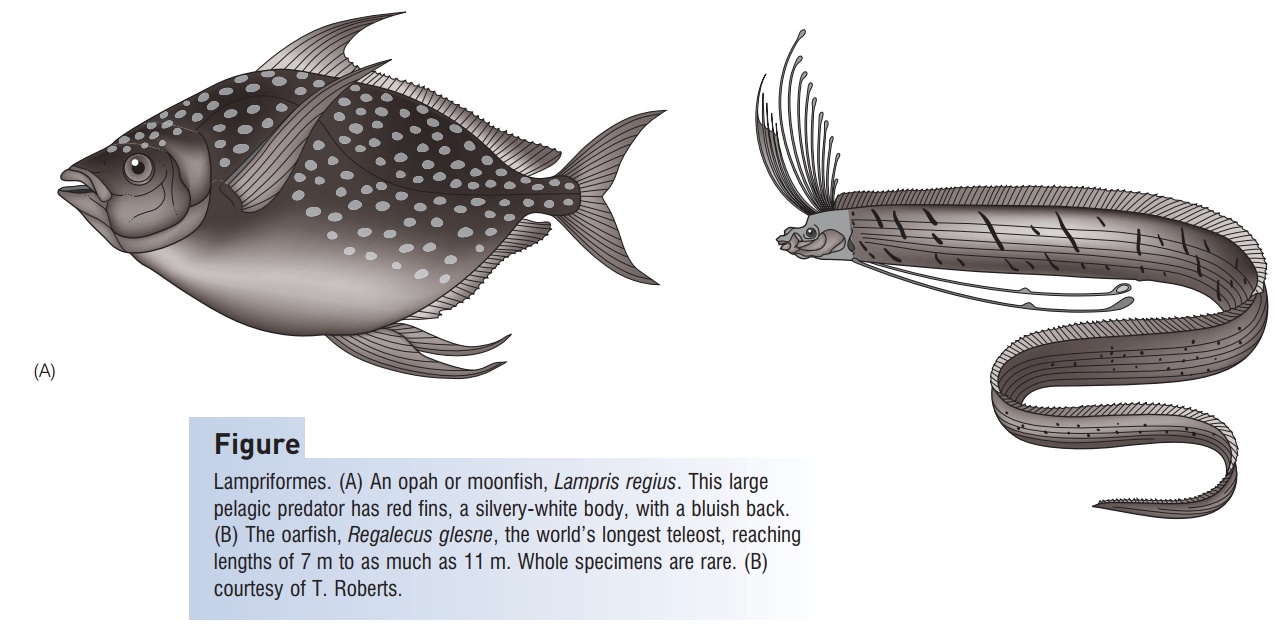Chapter: The Diversity of Fishes: Biology, Evolution, and Ecology: Teleosts at last I: bonytongues through anglerfishes
Superorder Lampriomorpha - Acanthomorpha: thespiny teleosts

Superorder Lampriomorpha
As is often the case, the most primitive members of a majortaxon retain certain ancestral traits but possess others indicative of advanced status. Lampriforms lack true spines, butthe maxilla helps move the premaxilla and bears no teeth.The connection between the two upper jaw bones and themanner in which they slide to protrude the mouth areunique, so much so that the group used to be referred toas the Allotriognathi, or “strange jaws”. The seven familiesof lampriforms are almost all open water oceanic fisheswith unusual body and fin proportions. Opahs are relativelylarge (up to 1.8 m, 70 kg), oval-shaped, colorful pelagicpredators on squids and other fishes (Fig. 14.23A). The30 cm long tube-eye (Stylephorus) is capable of an almost40-fold enlargement of its mouth volume during feeding,which is probably a record among vertebrates (see Jaw protrusion: the great leap forward). The remainingfive families contain mostly large and rare, elongate, pelagicfishes with long dorsal fins. Crestfishes and radiicephalidshave ink sacs that they discharge through their cloaca. In trachipterid ribbonfishes, the caudal fin is made up only ofthe upper lobe, which sits inclined at a right angle upward.The oarfish, Regalecus, reaches a confi rmed length of over7 m and perhaps as much as 11 m, making it the longestextant teleost; uncertainty arises because intact specimensare seldom found (Fig. 14.23B). Despite their size, they areapparently planktivores that hover head up in the watercolumn, swimming via rapid undulations of the long dorsalfin. Their name comes from bladelike expansions at the endof the pelvic fins. Specimens are uncommon, many obtainedafter storms when the bodies of these strange-looking fishesare tossed up on beaches. The oarfish, with its bluish-silverybody, scarlet dorsal crest of elongate fin rays, and deep redfins, is likely responsible for many sea serpent sightings,particularly those referring to monsters “having the headof a horse with a fl aming red mane” (Norman & Fraser1949, p. 113).

Figure 14.23
Lampriformes. (A) An opah or moonfish, Lampris regius. This largepelagic predator has red fins, a silvery-white body, with a bluish back.(B) The oarfish,Regalecus glesne, the world’s longest teleost, reachinglengths of 7 m to as much as 11 m. Whole specimens are rare. (B)courtesy of T. Roberts..
Related Topics